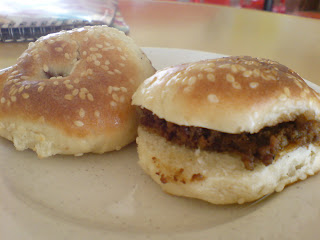
Sibu, Sarawak is an inland town, and the capital of Sibu District (229.8 square kilometers) in Sibu Division, Sarawak, east Malaysia. It is located at the confluence of the Rajangand Igan Rivers, some 60 kilometers from the ocean. The population is dominated by Chinese especially the Fuzhou as well as indigenous Melanau, Malay, and Iban. The district population (per year 2009 census) is 264,000.
Sibu is the main tourist gateway to the Upper Rajang River, with its small riverine towns and its many Iban and Orang Ulu longhouses.
There is no known adjective for the people from Sibu of Sarawak, although there have been many unofficial suggestions: Siburian, Sibuian, Sibunite, Sibu-yan - none are officially recognised.

There has been a marked increase in public buildings in recent years. Sibu of Sarawak now boasts the largest town square in Malaysia, and the tallest building in Sarawak - the Sanyan Tower (三洋大厦,"Wisma Sanyan" in the official Malay language), a newly refurbished waterfront, and a large number of public parks. Sibu of Sarawak also has university-level courses offered by Laila Taib College (Previously known as United College Sarawak), which has built a campus on the site of the old Sibu airport.
Before 1 June 1873, Sibu of Sarawak was known as "Maling", named after the winding portion, "Tanjung Maling", on the other side of Rejang River. Maling was a small village with a few small and simple shop houses consisted of atap roof and wooden walls and floors. Main population was Malay and Chinese was minority. In 1841 "Sarawak" (the present Kuching - Sarawak Capital) was ruled by 'White Rajah', James Brooke. On 1 June 1873, the third division was created and the division was named after the native rambutan because of the fact that the division had a lot of native rambutan known as "Buah Sibau" in Iban language.
In 1901 Mr. Wong Nai Siong led the first batch of Foochows from China to Sibu to open up the fertile lands of Sibu for cultivation, a massive opening up of Sibu. Therefore, it was a landmark year or a milestone in the history of the development of Sibu.
Mr. Wong Nai Siong came to Singapore in September 1899. From there, he proceeded to West Malaysia, Sumatra and the Dutch East Indies. For six months he explored the places but failed to find a suitable place for the immigration and settlement of his folks in China. In April 1900, Mr. Wong Nai Siong came to Sarawak and got the approval of the Sarawak Rajah to look for a suitable site for Chinese immigrants.
Mr. Wong explored the lower valley and upper reaches of the Rejang River. He soon discovered that the Rejang Delta was very fertile and particularly suitable for cultivation. So he decided to choose the area for opening up for cultivation. With that decision, Mr. Wong went to see the second Rajah of Sarawak, Rajah Charles Brooke, for discussions regarding the matter of opening up of land for cultivation. In those days of the Rajahs, Sarawak was sparsely populated with vast land yet to be developed, Mr. Wong's plan was timely and very much appreciated.
So, when Mr. Wong Nai Siong went to see Sir Charles Brooke and explained to him his plan to lead large groups of Foochows to open up Sibu for cultivation, the Rajah immediately agreed. Both parties signed an agreement.
Foods of the Sibu of Sarawak




No comments:
Post a Comment